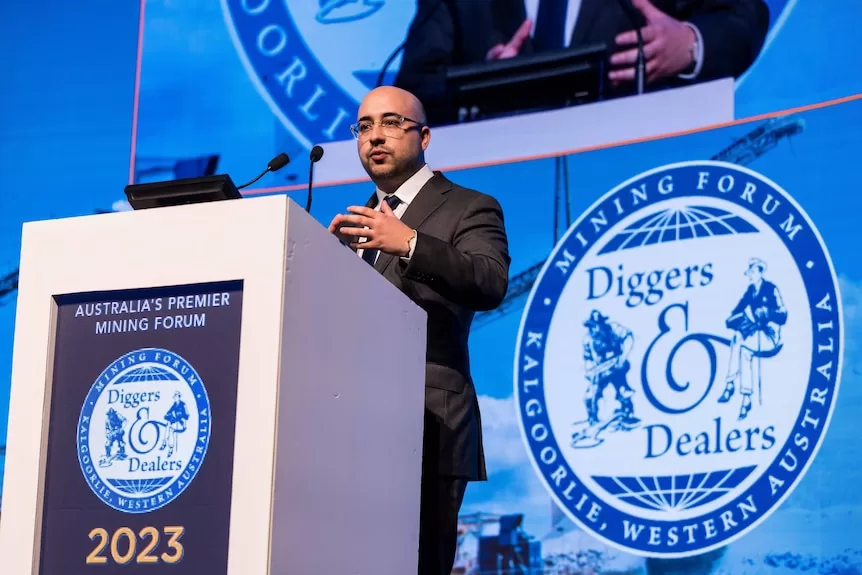More than 250 mining jobs are set to be affected by the closure of another operation in Western Australia’s once-booming nickel industry, as a resources analyst warns there could be several tough years ahead for the sector.
Key points:
- Kambalda was the scene of Australia’s first nickel boom in the 1960s and mining resumed in 2021 after several years of low metal prices
- Nickel prices have slumped again and Andrew Forrest’s privately-owned Wyloo Metals will “temporarily pause” mining at Kambalda
- The closure of the Long, Durkin and Cassini underground mines near Kambalda is set to affect more than 250 workers
Billionaire Andrew Forrest’s Wyloo Metals has confirmed its Kambalda nickel mines will be placed in care and maintenance mode by May 31, with prices for the stainless steel and battery ingredient slumping 45 per cent in the past 12 months.
It comes barely six months after Mr Forrest’s private company paid $760 million to acquire the Cassini, Long and Durkin mines at Kambalda, which employ 44 Wyloo workers and 220 contractors.
The closure follows this month’s mothballing of the Savannah nickel mine in WA’s Kimberley, and the decision by First Quantum Minerals to cease mining at the Ravensthorpe nickel mine on WA’s south coast and cut 30 per cent of its workforce.
In a statement, Wyloo CEO Luca Giacovazzi described the decision to mothball the Kambalda mines as temporary.
“We are exploring a number of options for the long-term future of our business, including developing our own concentrator in the Kambalda region,” he said.
“The decision to temporarily pause our operations in the current nickel market will allow us to develop and assess these options as we move towards our long-term strategy to mine and process nickel from our own facilities in Kambalda and Kwinana.
“Our priority is to support our people through this transition, and we will work with our contractor partner and Fortescue to explore potential job opportunities for impacted employees.”
The closure comes after Wyloo announced in April last year it had secured industrial land in Kwinana, south of Perth, for Australia’s first proposed integrated battery material facility.
Wyloo and WA nickel miner IGO have been working towards a financial investment decision for the project, which would include a downstream nickel refinery.
A feasibility study was due to be completed in mid-2024 after the companies leased 30 hectares from the state government.
BHP hit by Kambalda closure
The first domino to fall from the Wyloo closure could be BHP’s Kambalda nickel concentrator, which employs 40 workers.
It had been on care and maintenance since 2018 before being restarted in 2022 to process ore from the Kambalda mines when they were owned by Mincor Resources.
Mincor spent $98 million restarting mining at Kambalda before it was taken over by Wyloo and delisted from the ASX last year.
BHP’s Nickel West division is also facing questions about the 50-year-old Kalgoorlie Nickel Smelter, where work has been progressing ahead of an upcoming furnace rebuild.
In a statement on January 17, BHP’s Nickel West asset president Jessica Farrell described the current market as a “very tough operating environment”.
“Costs have risen sharply and continue to go up while prices have fallen as new supply comes into the market,” she said.
“Nickel West is a complex business combining underground mining operations, third party supply, on-site smelting, downstream refining and a multi-stage supply chain in a fast-evolving global market.
“We know this is creating a lot of uncertainty for the many people who work in Australia’s nickel industry, and we continue to communicate with our people and across the sector as we take action to address these challenges.”
The closure of Wyloo’s Kambalda operations will also impact underground mining contractor Pit N Portal.
Pit N Portal’s parent company Emeco Holdings is in the process of selling the contract to ASX-listed contractor Macmahon.
Emeco will retain the mining fleet as part of the deal announced in December, which Macmachon had said would add more than $140 million to its order book.
Tough years ahead: Analyst
Canacord Genuity analyst Timothy Hoff said the the nickel market was likely to remain in over-supply for several years, due to China’s investment in Indonesia’s nickel industry.
“What’s been developing over the last few years is China has invested very heavily in Indonesia in capacity, and a process which takes class two material into class one,” he said.
“That’s what we’re seeing manifest now, a lot of class two material crossing over, and we have an over-supplied market.
“We think this is going to stick around for a few years, so it’s probably likely to be a tough time for the West Australian nickel industry.”
Mr Giacovazzi said the London Metals Exchange (LME) was “awash with pollutive nickel” which was squeezing out “clean nickel” from Australian producers.
“We need to see structural change in nickel pricing that distinguishes between nickel products as well as their ESG credentials,” he said.
Perth-based Chalice Mining — a market darling since its 2020 discovery of the Gonneville nickel-copper-PGE deposit in WA’s Wheatbelt — was another nickel player to take a hit on Monday.
The Alex Dorsch-led Chalice announced plans to reduce corporate overheads by 40 per cent, cutting executive salaries, director fees and its exploration budget by $29 million compared with last year.
“The nickel market is experiencing structural changes, with an oversupply of highly polluting, high carbon intensity nickel from Indonesia,” Mr Dorsch said.
“Given the majority of this supply is driven by Chinese investment and will not be compliant with the United States Inflation Reduction Act, in our view western battery makers are still actively looking to source western nickel and this is not reflecting in LME prices.”
Find more local news
Browse for your location and find more local ABC News and information
